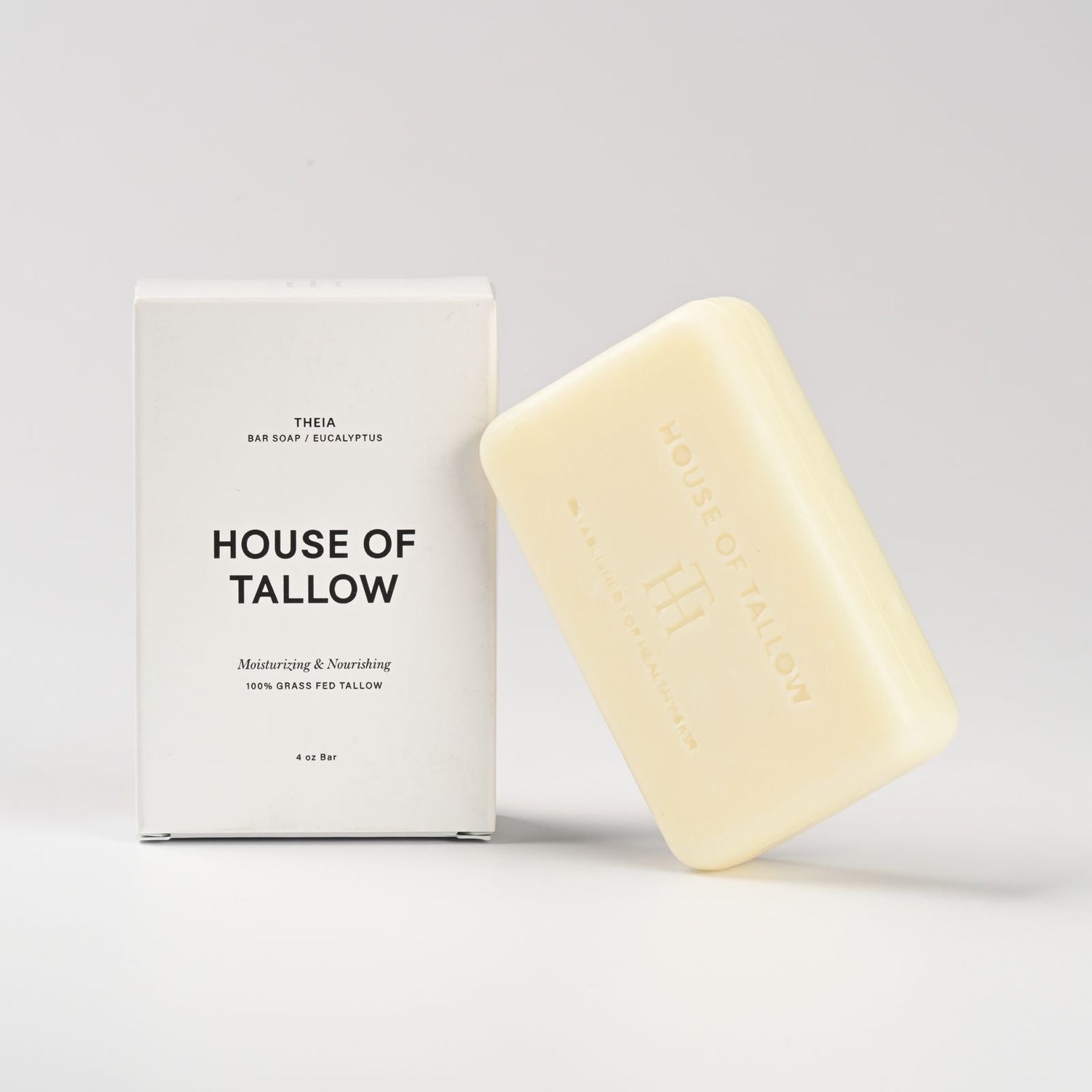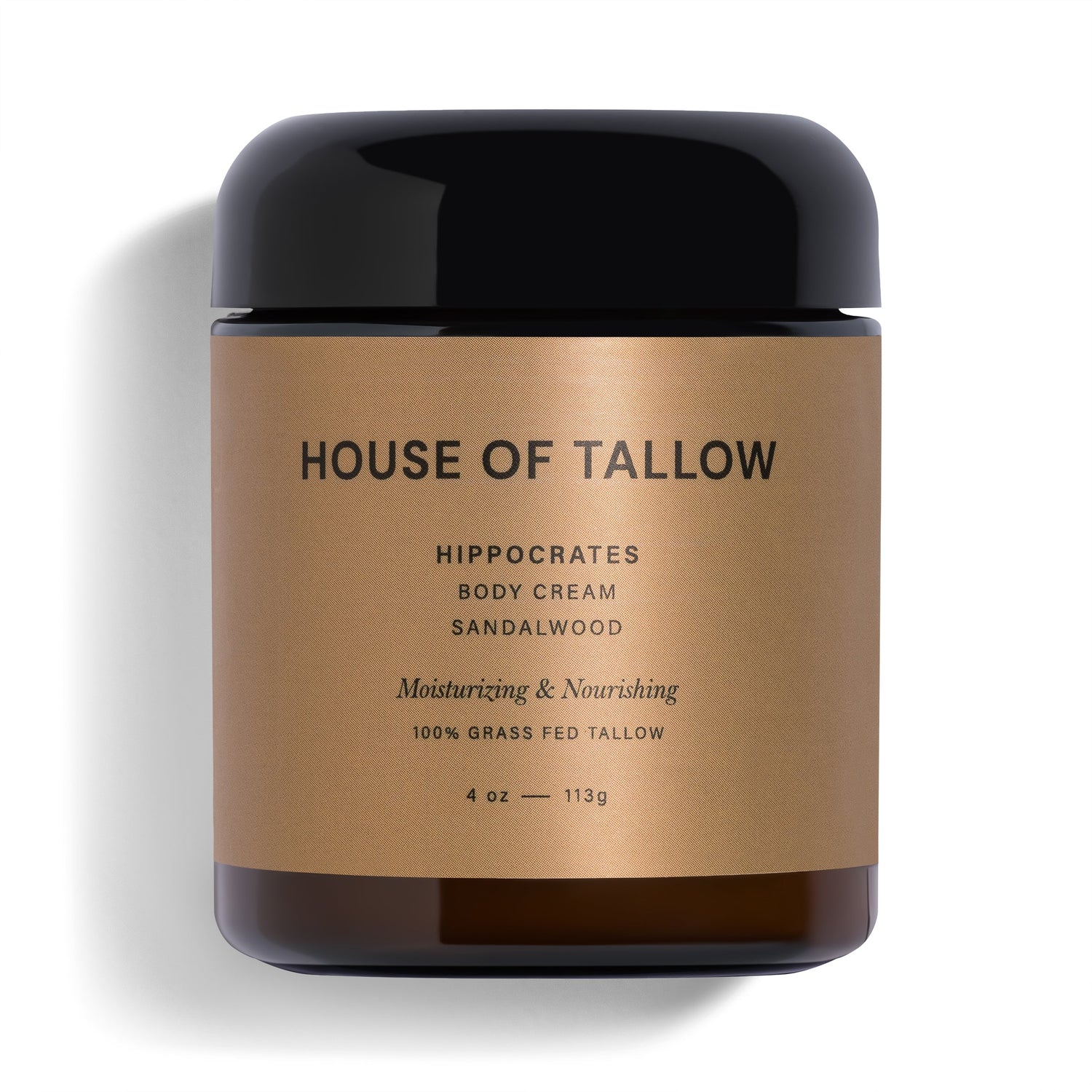Which is better for your skin: tallow or aloe vera? Here's a quick breakdown to help you decide:
- Tallow: Derived from grass-fed beef fat, it’s rich in fatty acids and vitamins that mimic your skin's natural oils. Best for dry or sensitive skin needing deep hydration and barrier repair.
- Aloe Vera: A plant-based gel known for its soothing and cooling properties. Ideal for oily or irritated skin, burns, or temporary redness.
Quick Comparison
| Factor | Tallow | Aloe Vera |
|---|---|---|
| Origin | Animal-based (beef fat) | Plant-based (succulent) |
| Best For | Dry, flaky, or sensitive skin | Oily or irritated skin |
| Primary Benefits | Deep hydration, barrier repair | Soothing, reduces redness |
| Texture | Thick, creamy | Lightweight, gel-like |
| Environmental Impact | Requires ethical animal sourcing | More eco-friendly |
Key takeaway: Use tallow for long-lasting hydration and skin repair, while aloe vera offers quick relief for irritation. You can even combine both for balanced skincare!
Tallow in Skincare: Benefits and Downsides
What Is Tallow and How Is It Used in Skincare?
Tallow is rendered animal fat, most often derived from grass-fed beef, and has found its place as a natural ingredient in skincare. Thanks to its nutrient-rich composition, tallow acts as an effective moisturizer, especially for those with sensitive skin. Brands such as House of Tallow have updated its use by crafting high-quality skincare products that emphasize purity and nourishment.
This carefully processed fat is packed with nutrients, making it a sought-after ingredient for those looking for a more natural approach to skincare.
Benefits of Tallow for Sensitive Skin
Tallow stands out for its ability to nourish and soothe sensitive skin. Its nutrient content and compatibility with the skin’s natural oils make it a favorable choice. Here's a closer look at its strengths:
| Benefit | Description | Impact on Sensitive Skin |
|---|---|---|
| Vitamin Content | Loaded with vitamins A, D, E, B12, and K | Helps repair and protect the skin |
| Fatty Acid Profile | Matches the composition of human skin | Strengthens the skin barrier |
| Anti-inflammatory Properties | Naturally calms inflammation | Reduces redness and irritation |
| Deep Hydration | Absorbs into deeper layers of the skin | Locks in moisture effectively |
Because tallow mimics the skin's natural oils, it’s less likely to cause allergic reactions compared to synthetic moisturizers [1].
Drawbacks of Using Tallow
Despite its benefits, tallow isn't for everyone. Here are some points to consider:
- Not vegan-friendly: Since it’s derived from animals, tallow isn’t suitable for vegans or those who prefer plant-based skincare.
- Natural scent: Some users might notice a distinct smell. However, brands like House of Tallow address this by offering unscented options or versions enhanced with essential oils [2].
- Quality concerns: Tallow from poorly sourced animals may lack nutrients or irritate the skin. Grass-fed sources are ideal for ensuring purity and effectiveness [3].
- Compatibility issues: Tallow-based products might not blend well with synthetic skincare items. For best results, they work better in simplified, natural skincare routines [2].
For those who prefer plant-based alternatives, options like aloe vera provide a different way to care for sensitive skin. While tallow has its place, individual preferences and skincare goals will guide the best choice.
Aloe Vera in Skincare: Pros and Cons
What Makes Aloe Vera a Popular Skincare Ingredient?
Aloe vera gel, taken from the plant's leaves, is packed with moisture-binding natural sugars, antioxidants, and vitamins A, C, and E. Its lightweight, non-greasy texture absorbs easily into the skin, while its cooling properties can quickly calm irritation. These features make it a go-to option for soothing and supporting sensitive or irritated skin.
Benefits of Aloe Vera for Sensitive Skin
Studies back up aloe vera’s ability to address various skin issues. For example, research published in the Journal of Ethnopharmacology showed that aloe vera gel reduced inflammation by 48% in participants dealing with skin irritations [4]. Below is a closer look at its benefits:
| Benefit | Description | Impact on Sensitive Skin |
|---|---|---|
| Anti-inflammatory | Helps decrease redness and irritation | Calms and soothes the skin |
| Hydration | Contains water-rich gel and natural sugars | Adds moisture without greasiness |
| Healing | Offers antimicrobial and antioxidant support | Aids in skin repair and defense |
Challenges of Using Aloe Vera
While aloe vera has plenty of strengths, it’s not without its challenges. The effectiveness of aloe vera products can vary based on how they’re processed; many commercial options contain only small amounts of active ingredients. Some people may also experience allergic reactions, such as contact dermatitis or irritation. Additionally, pure aloe vera gel doesn’t last long and needs proper preservation to stay effective.
To get the most out of aloe vera, experts suggest doing a patch test before regular use and opting for high-quality, organic products free of harsh chemicals or artificial fragrances. This can help reduce the chances of irritation while making the benefits more noticeable for sensitive skin.
Knowing both the advantages and challenges of aloe vera provides insight into how it stacks up against other natural skincare options like tallow.
Tallow vs Aloe Vera: Side-by-Side Comparison
Key Differences Between Tallow and Aloe Vera
Tallow closely resembles the skin's natural oils, offering deep and lasting hydration, while aloe vera provides a lighter, fast-absorbing moisture boost. Their effects on the skin barrier also differ. Tallow, rich in saturated fats, forms a protective layer that helps repair and maintain the skin barrier. Aloe vera, on the other hand, focuses more on calming and soothing the skin.
Both ingredients have anti-inflammatory properties, but they work in distinct ways. Tallow's fatty acids help reduce redness and inflammation, while aloe vera's active compounds provide instant relief for irritation. Their sourcing methods also set them apart, reflecting different approaches to natural skincare.
Here’s a detailed breakdown to help compare these two ingredients:
| Factor | Tallow | Aloe Vera |
|---|---|---|
| Moisturizing Ability | Deep, long-lasting hydration; mimics skin's natural oils | Lightweight, fast-absorbing hydration |
| Skin Barrier Support | Excellent for barrier repair and protection | Primarily focuses on hydration |
| Anti-inflammatory Effects | Reduces redness and inflammation with fatty acids | Offers instant cooling and soothing relief |
| Skin Type Suitability | Best for dry and sensitive skin | Ideal for oily or irritated skin |
| Texture and Absorption | Thick, creamy texture; absorbs slowly | Light, gel-like texture; absorbs quickly |
| Environmental Impact | Animal-based; requires ethical sourcing | Plant-based; more eco-friendly |
| Product Stability | Long shelf life with proper care | Shorter shelf life; needs careful storage |
Tallow is a great option for those needing intense hydration and repair, while aloe vera is ideal for lightweight, soothing care. Choosing the right one depends on your skin's specific needs and preferences.
sbb-itb-a1b9fc0
How to Decide Between Tallow and Aloe Vera
What to Consider When Choosing
Your skin type plays a big role in deciding between these two. If your skin is dry or sensitive and needs deep, long-lasting moisture, tallow might be the better choice. On the other hand, aloe vera is a great option for oily or combination skin that benefits from lightweight hydration.
It also depends on your specific skin concerns. Tallow is helpful for repairing a damaged skin barrier or managing chronic conditions like eczema. Aloe vera is better suited for calming temporary issues like irritation, sunburn, or redness. If ethical factors matter to you, aloe vera aligns with vegan lifestyles and might be a more suitable option if that's a priority.
When to Use Tallow or Aloe Vera
- Tallow: Works best for very dry skin, long-lasting hydration, managing eczema or other chronic skin conditions, and offering protection during colder months.
- Aloe Vera: Ideal for soothing irritation or inflammation, providing quick cooling relief, hydrating without heaviness, and calming temporary redness.
Can Tallow and Aloe Vera Work Together?
Absolutely! These two ingredients can complement each other when used together. Start with aloe vera for its calming and hydrating properties, then apply tallow as a final layer to lock in moisture and protect the skin barrier. This approach lets you enjoy the benefits of both without compromising their effectiveness.
Is Beef Tallow Good for Your Skin? Dermatologist Analysis
Conclusion: Choosing the Right Ingredient for Your Skin
The best ingredient for your skin depends on your specific needs. Tallow, with its fatty acids that closely resemble the skin's natural structure, works well for dry or sensitive skin. It's packed with vitamins A, D, E, and K and offers support for the skin barrier while calming inflammation.
On the other hand, aloe vera provides gentle hydration and soothing relief, making it a great match for oily or combination skin. For those seeking minimal irritation, grass-fed tallow products, like House of Tallow's unscented options, can be a solid choice.
Here's a quick breakdown to guide your decision:
| Skin Concern | Best Choice | Reason |
|---|---|---|
| Dry, damaged barrier | Tallow | Rich in fatty acids, mimics skin structure |
| Temporary irritation | Aloe Vera | Provides soothing and cooling effects |
| Chronic conditions | Tallow | Offers anti-inflammatory and deep nourishment |
| Light hydration needs | Aloe Vera | Non-greasy, perfect for lightweight moisture |
Keep in mind, skincare doesn't have to be a one-or-the-other choice. You can combine aloe vera's calming effects with tallow's nourishing properties for a balanced approach. If you have sensitive skin, patch testing is always a smart move. The key is understanding your skin and experimenting to find what works best for you.
FAQs
Does aloe vera irritate sensitive skin?
Aloe vera is often praised for its soothing properties, but it’s important to know that it can sometimes cause reactions, especially in people with sensitive skin. Research indicates that aloe vera may lead to allergic responses in certain individuals when applied topically [4].
Here’s a quick guide to potential reactions and what to do if they occur:
| Reaction Type | Symptoms | Recommended Action |
|---|---|---|
| Mild Irritation | Slight redness, minor itching | Stop use; rinse with cool water |
| Allergic Response | Hives, swelling, intense itching | Seek medical help; discontinue use |
| Contact Dermatitis | Rash, inflammation, burning sensation | Stop use; consult a doctor |
For those with sensitive skin, tallow-based products are often considered a gentler option compared to aloe vera. Grass-fed tallow options, like the unscented products from House of Tallow, are a good alternative for minimizing the risk of irritation [1].
"Tallow is generally considered less likely to cause allergic reactions compared to synthetic ingredients in commercial skincare products. However, individual skin types may react differently" [1][2].
Regardless of whether you choose aloe vera or tallow-based products, always perform a patch test before full application. This step is especially crucial for anyone with a history of skin sensitivities or allergies.
Knowing how your skin might react to aloe vera can help you decide if it’s the right choice or if alternatives like tallow might be a better fit for your skincare routine.




